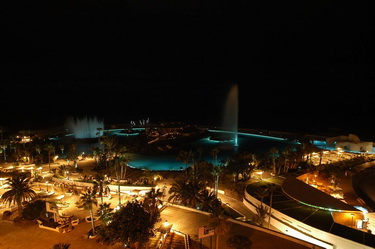![El Peñón del Fraile [Friar’s Crag]](https://citpuertodelacruz.com/wp-content/uploads/2017/09/penon.jpg)
El Peñón del Fraile [Friar’s Crag]
El Peñón del Fraile [Friar’s Crag]
This is one of the town’s symbols, a gigantic volcanic rock, a product of the eruptions of 1430 and which owes its name to a friar who, in the early part of the XVIIIth Century, climbed up to pray in isolation. In 1813, the Genoese Luis Lavaggi, on a whim, decided to beautify the rock with a stone stairway, and a small flat area at the summit , adorned with an enormous green cross with bronze ornaments The shrine was built in 1855 and restored in 2003 with a new bronze dome. The crag witnessed executions and legend has it that in one of the cracks is hidden the treasure of Caraperro [Dogface] the pirate. In the XVIIth Century it was chosen by the penitent friar Juan de Jesús, after arriving from Icod de los Vinos, as his place of prayer for many years. Another legend recounts that one day the friar decided to set up a cross made of “verodes” [Senecio kleinia – a succulent ] , and the next morning the crag appeared to have bloomed and was covered with flowers.




![Casa Iriarte [the Iriarte Family House]](https://citpuertodelacruz.com/wp-content/uploads/2017/09/casa_iriarte.jpg)
